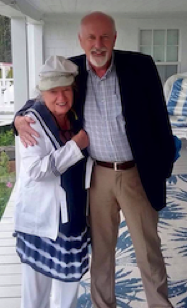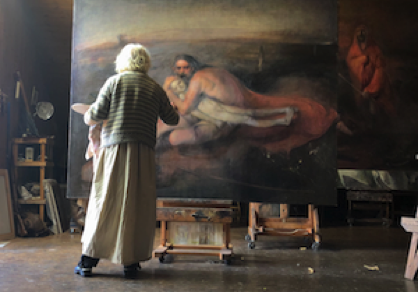In some way we are comprised of all our experiences and encounters and passions. Each person I meet, however different from me, becomes a distinctive tile in the mosaic of my life. If there is any deposit of the skills and insights of the many artists I have had the pleasure to encounter, I will be well satisfied. In the end it will all be filtered through my own vision of reality and of a coming restoration of all things.
Thank you for travelling with me.
Fergus A Ryan
I spent the Spring of 2015 at the Florence Academy of Art, in a drawing and painting intensive programme, focused on the figure, portrait and still life in the academic tradition.
In May 2019 I was invited to spend a week at the studio of the Norwegian paimter Odd Nerdrum. Seeing his astonishing works on a grand scale and watching him paint might well have been a visit to Titian or Rembrandt.
Art Adventures
Initially focussed on the surrounding world, I have more recently been exploring the human figure, and figure in landscape, inspired by some fine contemporary artists, including David Kassan (who has become a friend) and, further afield, the Madrid realists Antonio López Garcia and Isabel Quintanilla.
In 2013 I spent the Summer painting en plein air in the Roman campagna with the noted painter Israel Hershberg of the Jerusalem Studio School's Summer programme in Civita Castellana, a site associated with Jean-
Baptiste-Camille Corot and other landscape painters of the Grand Tour. (My plein air painting of Corot's vantage point, 'Villa Bianca, Civita Castellana', below, was painted in the early morning before breakfast).
The Grand Tour
I used to tell Sarah that if I ever went missing to search for me in the prints and drawings study room of the Victoria & Albert Museum in London. Many of the works were made on the romantic Grand Tour across Europe to Venice and Siena and Florence, some inspired by John Ruskin's book The Stones of Venice. I followed them to Venice several times, lost in the light of another world drawing palaces on the Grand Canal, or the Byzantine basilica of San Marco (my 1988 drawing below). In Modern Painters Ruskin laid out his credo:
The greatest thing a human soul ever does
in this world is to see something, and to
tell what it saw in a plain way. Hundreds
of people can talk for one who can think,
but thousands think for one who can see.
To see clearly is poetry, prophecy, and
religion all in one.

Passions and Inspirations

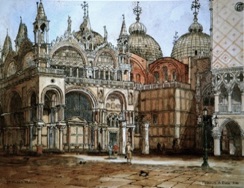
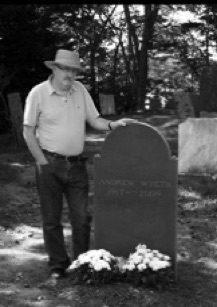
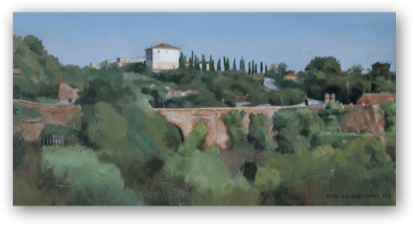
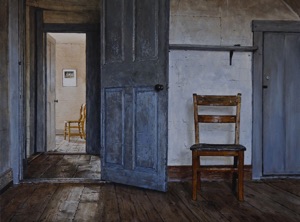
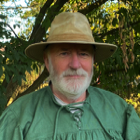

Painting with Eggs
Andrew Wyeth invaded my inner spaces more than any other artist. After seeing Christina’s World at the MoMA in New York 1970, I was captured by some wordless inner yearning or wistfulness. On an Aer Lingus crew stopover in Boston I first drove through the Maine countryside near Cushing looking for Christina Olson’s crumbling house. Finding it before it became better known had the quality of a spiritual pilgrimage about it, and I completed several small studies of the bone-dry structure. In 2008 at Brandywine Museum in Chadds Ford I met Helga Testorf, the Prussian subject of many of Wyeth’s paintings. Andrew Wyeth’s death in January 2009 was a moment of profound sadness for me. Thinking he was buried in Chadds Ford I was surprised to stumble on his simple gravestone at Olson's family burial ground in Maine. My painting Dialogue is an emotional homage to Wyeth, reflecting an imagined conversation with him through his art for almost 50 years.
The Presence of Absence
For Wyeth the landscape was infused with memories and presences, perhaps even a certain witchcraft; for me it reflects both the human condition and the creative hand of a cosmic Mind. My father was a pantheist, a member of Madame Blavatsky's theosophical society. I am not; nature is created art, although infused with what the Buddhists call dhukkah, or the general unsatisfactoriness of things.
I think my primary response to this is a sort of solitude in timelessness, an experience of time suspended for a measureless moment, a glimpse of ‘the presence of absence’ (to borrow from Plato). It is not nostalgia for some ideal lost past, but a wistful longing for the coming renewal of all things, a cosmic reordering of heaven and earth. For the present there is a sense of dis-ease, a ‘real absence’, yet an intimation in every place, a revelation, that nature is ‘in the pains of childbirth', groaning, waiting for its coming deliverance from decay and death at the restoration and revealing of the New Humanity, reconciled to its magnificent true destiny and identity in Christ. It is the climactic fusion of Heaven and earth. To that cosmic destiny my compass points. For now, in the midst of absence and dhukkah, there are glimpses of enduring Presence and Order, an 'already-but-not-yet' overlap of the present and future ages, and handfuls of hope at the fingertips of faith.
